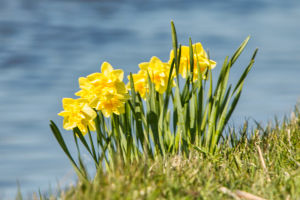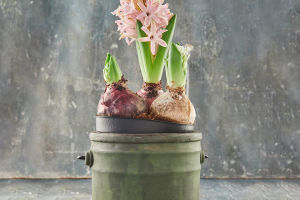In today's digital age, advancements in smartphone technology have revolutionized the art of photography, enabling amateurs and enthusiasts alike to capture stunning images of nature's wonders, such as flowers and plants.
With features like portrait mode, professional mode, and macro capabilities, smartphones have made flower photography accessible to everyone.
By mastering the right techniques, you can elevate your flower photography skills and capture the beauty of spring blooms like never before.
Timing is Everything:
Selecting the optimal time to photograph flowers is crucial for achieving captivating results. Early morning and late afternoon offer softer lighting conditions, enhancing the vibrancy of colors and highlighting delicate details. After rainfall, flowers adorned with glistening water droplets create a captivating ambiance, adding an extra layer of visual interest to your photos. If it's not raining, you can simulate this effect by using a small spray bottle. With the aid of macro mode or an additional macro lens, you can capture the intricate details within the water droplets, resulting in crystal-clear and visually stunning images.
Mastering Composition:
Composition plays a pivotal role in creating visually compelling flower photos. While there are numerous composition techniques, such as the rule of thirds, for smartphone photography, a simple nine-grid layout suffices. The intersection points of the grid lines are particularly impactful, serving as focal points that draw the viewer's attention. Positioning your subject at these intersection points can enhance the overall composition and visual appeal of your photos.
Harnessing the Power of Light:
Understanding the nuances of light is essential for achieving striking flower photos. Opt for shooting during the golden hours of sunrise and sunset when the light is soft and flattering, accentuating the intricate textures and vibrant hues of the flowers. Avoid using flash, as it can wash out the natural colors and textures of the subject. In low-light conditions, utilize the torch function of another smartphone to provide additional illumination from the side, ensuring optimal lighting for your photos.
Playing with Light and Shadow:
Experimenting with different lighting angles can add depth and dimension to your flower photos. Front lighting illuminates the subject directly but may lack depth, while side lighting creates dramatic shadows and highlights, resulting in a layered effect. Backlighting, with the light source positioned behind the subject, can create silhouettes and atmospheric effects, adding a touch of artistry to your photos. Avoid harsh top lighting, which can cast unflattering shadows, particularly during midday when the sun is at its zenith.
Mastering Exposure and Focus:
Take control of exposure and focus to ensure optimal results in your flower photography. Adjust exposure compensation by tapping the screen to focus on the flower and sliding the exposure control icon accordingly. Aim for a balanced exposure that retains both shadow and highlight detail. Utilize focus/exposure lock by pressing and holding the desired focal point on the screen, allowing you to recompose your shot without altering the exposure settings. This technique is particularly useful for capturing fleeting moments or when shooting in breezy conditions.
With the right techniques and a keen eye for detail, you can elevate your flower photography skills and capture the natural beauty of blooms in all their splendor. By harnessing the capabilities of your smartphone and mastering essential photography principles, you can unlock a world of creative possibilities and create captivating flower photos that showcase the wonders of nature.


